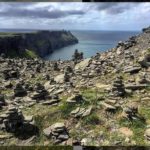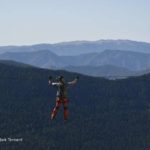Staying in a mountain refuge high in the mountains!
Spend a night in a mountain refuge high in the mountains!? Watch the sunset like you’ve never experienced it before.? Don’t let the word ?refuge? put you off.? Staying a night in a mountain refuge (or hut) is a great experience.? It’s a great way of ?bonding? together as a family, group of friends or work colleagues.? Meet people with people from all over the world with one thing in common; a love of the mountains.? At the end of the day the mountains become even more special as the majority of walkers head back down to the valley; but not you. The French Alps have a network of mountain refuges many owned by the French Alpine Club (Club Alpin Francais) or in this area by the Vanoise National Park with a few being privately owned.? Staying in a mountain refuge allows you to complete hut-to-hut treks like the Tour of the Vanoise.
Reservations
It is always best to reserve the refuge in advance.? Firstly it avoids finding the refuge full.? Although you’re unlikely to be turned away (if it’s a remote refuge).? However you may find yourself sleeping on the floor in the dining room!
You should be able to contact the guardian of the refuge either by phone or email.? If you’re currently staying at one refuge the guardian there may be happy to phone ahead for you to the next refuge.? In some areas, like the Vanoise National Park, the huts have their own online reservation system where you can reserve all the refuges for a particular trip in one place; saving time and a lot of phone calls.
If for whatever reason you can’t make it or change your route do remember to contact the hut to let them know.? First of all the hut may be full and others may be turned away and secondly there may be concerns for your safety.
Cost
At the time of writing (2014) the cost of half-board in French huts is typically around Euro 45.? If you want to self-cater some refuges have an area for self-catering.? If you are a member of the French Alpine Club, or a member of another club with reciprocal rights? you will normally have a discount on the hut fees. It’s worth remembering that the vast majority of mountain refuges do not accept credit cards!
Arriving at the Refuge
At the entrance there’s normally a boot room with ?hut? shoes, sometimes like ?Crocs?, to change into.? Don’t go into the main part of the hut in your walking boots unless you want to upset the guardian.
The first thing to do after making sure you’ve changed your footwear is make yourself known to the guardian.? He or she will then allocate you your bedspace.? They are also likely to ask which refuge you’ve come from and which refuge or route you intend to do the next day.? Now’s the time too to request a packed lunch for the following day and if asked tell them what drink you want for breakfast from the choice given.
The Guardian
The guardian is the most important person at the refuge.? It is him or her, who manages the refuge and ensure it functions efficiently.? No easy task.? Remember refuges are not hotels and doing your bit to help by following the ?etiquette? of the hut will make your stay, and that of others, more pleasant.? Frequently the guardian manages the hut on behalf of the owner be it the French Club Alpin Francais (CAF) or another body.
What to expect
 Facilities
Facilities
Refuges have become more luxurious than they once were reflecting changes in society.? However refuges in the high mountains may still be pretty basic.? Plugs / sockets for charging mobile phones or other portable electronic devices may not be available or very limited in number.? I’ve not come across wi-fi either and the mobile (or cellular) network may be poor or non-existent so plan accordingly.? If you need to contact another refuge on your trip ask the guardian and they will usually make it for you if you ask nicely.
Rooms
The more modern huts have relatively small dormitories now with may be 8 to a room however you may still come across the older style multi-occupany bunks with maybe 20 to a room on two levels with narrow single mattresses side by side on the base.? Cosy!
Showers
Most refuges on trekking routes have showers.? The high mountain refuges typically will usually not, as water is at a premium.? Some refuges make an additional charge by selling a token that also limits the amount of time you get with the water so make sure you’re organised before putting in the token.? It’s not much fun being all ?soaped up? and running out of water!
Meals
If you are staying on a half-board (demi-pension) basis then there will be usually a copious set evening meal.? Typically there’s soup; a main course with plenty of carbohydrate in the form of pasta / polenta and a desert of some type;; may be cheese.? I have had the experience where I’ve eaten fresh salmon!? Guardians are sometimes generous with a digestif like the regional genepy in Savoie / Haute Savoie.? Breakfast is typically? a? choice of coffee, hot chocolate or tea with bread, butter and jam.? Most refuges will also offer packed lunches but remember to order this on arrival the night before.
Remember that all the food and provisions for the hut are brought up from the valley; quite frequently by helicopter that explains that the prices are a bit higher and that there may not always be a great choice.
Winter Rooms
The huts guardian is normally at the hut from mid-June to mid-September.? It is clearly a good idea to check!
Outside of the main summer opening period there may be occasions when the guardian mans the hut.? Typically this is during the winter ski-mountaineering season.? If the guardian is not there huts usually have a ?winter? room that is left unlocked.? Here you will find bunks, blankets, and pillows plus limited cooking facilities.? So you will need to bring all your own food with you.? Hut fees are usually put in a ?letter box?.
Hut ?Equipment?
Footwear
When you arrive at the refuge it is normal to leave your walking boots in the boot room and here you will also find hut shoes (Croc type things or similar) for wearing in the hut.? You can if you wish carry some simple flip-flops of course in your sack.
Sheet Sleeping Bag
Don’t forget to bring a sheet sleeping bag or ?sac a viande? as it’s known sometimes.? These are now available in really lightweight fabrics including silk so take up very little space and weigh next to nothing.? It helps keep the bottom sheet and duvet / blankets cleaner.
Bedding
Blankets or increasingly duvets and pillows are provided in the dormitories so there’s no need to carry a sleeping bag.
Ear Plugs
It’s worth having some ear plugs with you in case there’s some snorers in the room with you.
Tips
If you’re leaving early in the morning before day break it’s worth doing a reconnaissance of the departure route to avoid wasting time in the dark in the morning.
Rubbish – you should take your rubbish with you as all rubbish has to be taken down to the valley or less usually now burnt.




